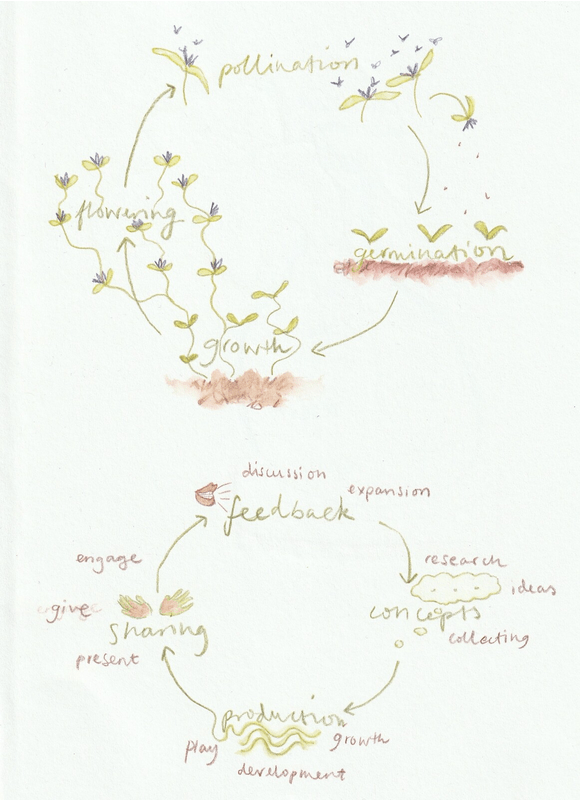Still Photography
Grampas negatives. Beautifully stored in numbered envelopes and meticulously indexed
Through my residency with the Northern Sustainable Darkroom, a new photographic space in Leeds, I am reconnecting with analogue photography.
Myself and 7 other artists have been commissioned to work with a new ‘photographic garden’ in Leeds to research environmentally-conscious alternatives to analogue photographic processes. The breadth of research by the other artists is fascinating and I can’t wait to see the garden, which was planted in September 2021, flourish this year.
I was drawn back to the darkroom, after being given a box of my Grampa’s negatives. My memories of the magic and mystery that occurs when processing film by hand came flooding back to me. Sustainable darkroom practices seek to find less toxic and wasteful approaches to working with analogue photography, and I was especially drawn to the idea of working with plant chemicals to develop film.
Connection vs use…
In the effort to lessen our impact on Earth, there is a tendency to reach for the natural world. We make use of more natural ingredients and materials, we explore natural processes and as recently quoted by David Attenburgh in The Green Planet we are implored to find ways to ‘work with plants’. The very ecosystem we endeavour to protect often becomes the craft cupboard, medicine cabinet and chemical store in the process. Whilst this approach obviously holds some of the solutions, does it solve the problem of our environmental collapse if we continue to live disconnected from nature? Without having a meaningful sense of affiliation and connection to nature, we tend not to take responsibility for our actions towards it.
Using nature and it’s offerings, doesn’t necessarily bring us closer to it. In fact, our utilisation of nature’s resources and our tendencies to dominate it, through garden weed and pest control for example, can contribute to our disconnection from the natural world and these behaviours date back thousands of years. My project ‘Still Photography’ tries to unpick this tangle, by exploring the use of plants for our wellbeing.
National Trust Dunham Massey’s Still Room recipe book, which I had the privilege of carefully leafing through in 2013.
Still beneficial
The project’s name references the Still Room practices of castles and country houses in Britain prior to the industrial revolution.
Still Rooms were part-kitchen, part-laboratory and part-apothecaries where tinctures, teas and other distilled concoctions were prepared for the household and local community, using garden grown and foraged plants, and other natural ingredients. Recipes and remedies were recorded in books, passed down through families and their staff. And whilst the recipes themselves are fascinating, the idea that our health can be sustained by the botany that surrounds our home sits at the heart of my research.
Before reaching into nature’s supplies to experiment with its uses, I began by researching how we can benefit from nature’s abundance, in ways that kindles connection and a closer relationship with it. I am particularly focused on how the natural world enhances our wellbeing, in ways that leaves it intact. I will be utilising nature to process photography, but I’m keen to explore how this can be done in a way that encourages pronature behaviours and instils a positive connection.
This beautiful illustration was created by Eleanor Sofia Walker, a student on my Nature of Wellbeing project delivered through Manchester Metropolitan University’s Rise programme in 2021. The course employed the seasonal approach embedded in my practice, and Eleanor’s sketch illustrates how we can emulate natural processes in the scaffolding of creative projects.
Overwintering
Within my practice and each of my projects, I work with a seasonal approach, which follows the lifecycle of flowering plants. Emulating the natural cycle in this way brings me closer to what is occurring outdoors. It encourages me to learn about natural processes and how I can behave similarly, in the production of my own work.
Each of my projects ‘winter’ and during this dormant stage my ideas are seeded, I draw down energy through reading and research, soak up inspiration and slowly put down roots.
In late autumn, the Sustainable Darkroom organised a series of seminars with General Treegan, who shared his research about the chemistry and processes he uses in his work with the resident artists. It set me off reading into plant chemistry, the natural processes that occur during a plant’s lifecycle and the moon’s effects on plant growth.
While my ideas wintered, I began collecting seasonal imagery on film and digitally. Using natural light and waste kitchen and garden materials to create anthotypes of plants found within a few minutes of my home, I began to experiment with processing images. These plants are beneficial to our wellbeing in some way, as are the plant-based teas used in the anthotype process.
My prints are still developing in my allotment’s greenhouse and I’m enjoying peering into their ethereal effects as they fade in the winter light.
As we move into spring 2022, I’m looking forward to returning to working with film and bringing plants into the process, both as my subject matter and my chemistry.


